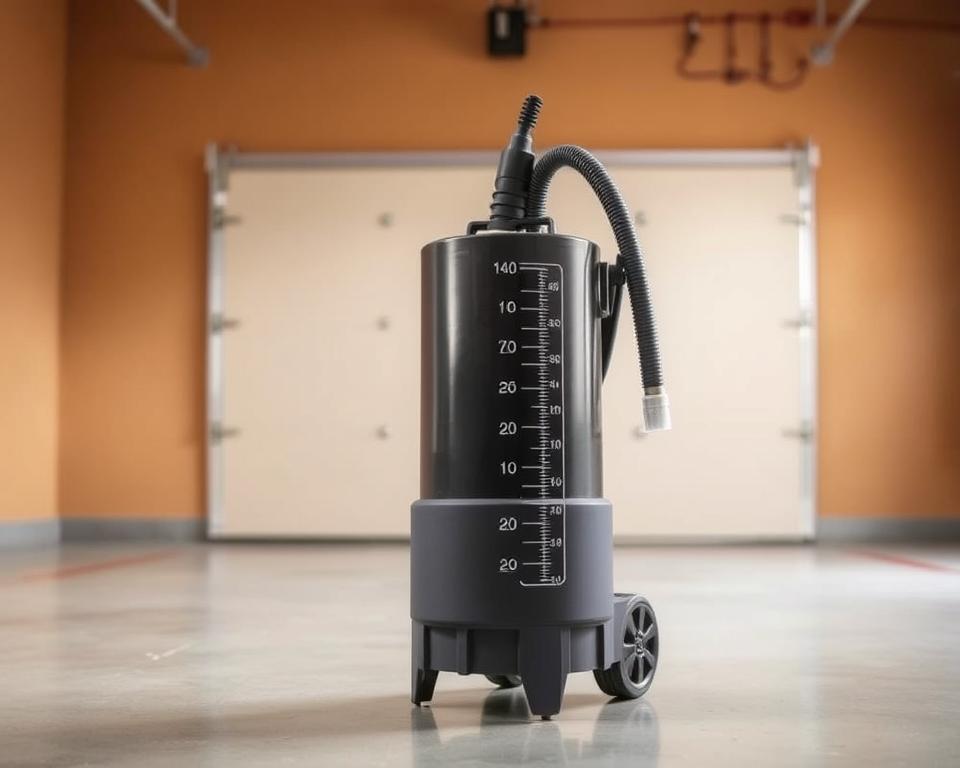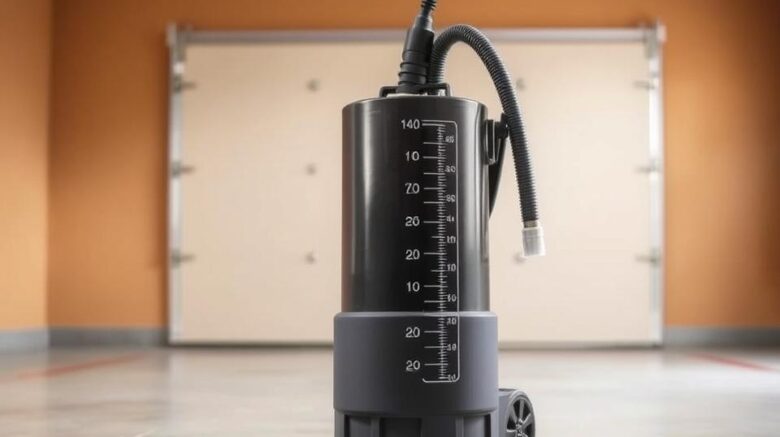RV Black-Water Pump: Key Upkeep Tips
Are you sure your motorhome’s black water pump is trip-ready, or could it trigger campsite headaches? Keeping your motorhome’s waste system in peak form is critical. It lets you avoid unpleasant aromas, blockages, and hefty fixes. We’ll share key advice to make sure your sewage pump functions seamlessly, keeping your travels peaceful.
Grasping Your RV’s Plumbing System
The RV plumbing system is fundamental for any successful road trip. It breaks down into two main parts: the black water system and the gray water system – RV water tank and pump. The black water system holds waste from the toilet, whereas the gray water system processes wastewater from sinks and showers.
The systems use drain lines that lead to different tanks, designed for effective waste management. Each tank has a vent to block gas from building up, ensuring the operation is safe and odor-free. Proper waste management in an RV is key to prevent leaks or bad odors. By learning about both black and gray water tanks, RV owners can service and manage waste better.
Knowing how your RV’s plumbing works reveals issues promptly. Regular maintenance creates carefree adventures for everyone. Keeping on top with your RV’s plumbing system assures reliability during your travels.
RV Tank Categories
Operating RVs involves being aware of the different tanks. Each one is key to your RV’s function, needing regular upkeep.
The fresh water tank stores cook-and-drink water. It’s essential for a convenient RV experience.
The gray water tank collects sink, shower, and other non-Septic wastewater. Maintaining this tank keeps your RV sanitary while traveling. The black water tank, on the other hand, contains toilet waste. It needs regular emptying and meticulous maintenance to avoid issues.
By learning about the fresh, gray, and black water tanks, RV owners can smoothly run their systems. This forethought and regular maintenance ensure smooth running of the waste management system.
How RV Black Water Tanks Work
The working of the black water tank is essential in RV waste management. It receives waste from the toilet via a gravity-fed system. Upon flushing, waste and water are directed into the tank, to be stored until removal is necessary. It’s paramount to keep water levels optimized in the toilet to sidestep solid waste buildup.
Knowing how RV waste tanks function can sidestep clogs and odors. Without proper care, solid waste hardens, creating blockages and emptying difficulties. Thorough tank flushing techniques are critical to preventing these issues, securing smooth functionality.
Frequent inspection of tank mechanics is advised for RV owners. This includes observing flushing methods and maintaining adequate water flow. Practicing these essentials helps with efficient tank maintenance, forestalling expensive fixes later.

Essential Maintenance Tips for Your RV Black Water Pump
Performing regular maintenance on your RV’s black water pump is vital. First, pick RV-safe toilet paper to minimize clogs and enhance flow. A deep flush can remove waste and cut bad smells. Consistently cleaning the tank helps avoid residue buildup, keeping your RV fresh and comfortable.
Run routine inspections to check your pump’s condition. Search for any signs of wear or damage that could reduce its function. Using specialized tank treatments, like those from All in Sanitation, can markedly enhance both performance and cleanliness. Sticking to these tips can increase your pump’s life and upgrade your RV’s living conditions.
Opt for RV-Specific Tissue
Keeping your RV’s black water system demands crucial measures. One essential tip is using RV-safe toilet paper for clog prevention. This dedicated product dissolves quickly in water, perfect for RV sanitation systems.
RV-safe toilet paper is vital for tank maintenance. It dissolves fast, avoiding blockages from slow-decomposing materials. This improves waste disposal efficiency and keeps the plumbing free-flowing.
Pick brands designated as RV-safe when buying toilet paper. These products minimize clog risks and prolong your black water tank‘s lifespan by avoiding buildup. Consistent use secures a stress-free camping experience, void of plumbing troubles.
Proper Tank Cleansing
Flushing thoroughly your black water tank is crucial for smart waste management in your RV. To aid waste movement, make sure the toilet bowl is properly topped up before flushing. Many RVs are equipped with built-in tank flush systems to make the process more efficient. For RVs without this feature, attaching tank rinsers that attach to the sewer outlet offers a practical alternative.
Correct tank flushing assists waste removal and stops solid accumulations and bad smells. Continuing this process secures your RV stays fresh-smelling, making your travels more agreeable. A commitment to regular and complete tank flushing will upgrade hygiene and the overall condition of your RV’s plumbing system.
Keep Tanks Clear with Steady Cleaning
Maintaining your RV’s black water tank free of buildup is crucial for its efficient function. Regular cleaning gets rid of lingering waste inside the tank walls. This means washing well with water and using specific RV tank cleaners for tough deposits.
By cleaning diligently, you halt odors and lessen clog risks. A properly cleaned tank makes RVing better and helps your plumbing last longer. Include tank maintenance into your routine to guarantee smooth travels.
Picking Suitable Additives
Selecting suitable chemicals for RV black water pump maintenance is key for managing waste and reducing smells. Many RV enthusiasts favor enzyme-based RV holding tank treatments. These products contain good bacteria to break down solids and curb bad odors.
Shunning harsh chemicals is critical to prevent damage to your plumbing. Such substances can eat away at pipes, leading to costly fixes and diminishing your RV enjoyment. Applying safe chemicals for odor control guarantees your tank and pump’s longevity.
Preserving your RV black water tank in prime shape betters your travel experience. Using the right holding tank treatment periodically guarantees your system works well.
Timely Tank Emptying
It’s important to empty your RV’s black water tank at the correct moment for proper dumping. Aiming to do so when the tank is about two-thirds full is sensible. This avoids solid waste buildup, providing a smoother emptying process.
Draining at authorized stations is key for safe, eco-friendly waste handling. It’s vital to track the tank‘s levels closely. Letting it fill completely can create clogs and make disposal more difficult.
Proper timing and methods are vital for hygienic waste management and can lengthen your plumbing’s life. Remaining attentive and servicing the system properly delivers a pleasant RV living experience.
Seal Checks & Care
Examining seals around the toilet and tank is critical for leak prevention. Over time, these seals might break down, leading to odors and potential harm. A comprehensive inspection will reveal any wear or damage. Catching issues early makes possible quick replacement to guarantee a secure connection and odor-free RV.
Leaving a bit of water in the toilet bowl supports in preserving seal condition. This protective habit is critical in RV seal upkeep. It extends the seals’ life, avoiding leaks and foul odors.
Consistent seal maintenance can forestall expensive repairs later. By paying attention to seal health, RV owners deliver a pleasant journey.
Further Advice for Extended Maintenance
Scheduling professional servicing for your RV at least once a year is smart, particularly for black water tank care. This strategy helps in spotting issues sooner and preserves your plumbing system’s integrity.
When getting your RV for storage, completely clean and empty the black water tank first. Think about antifreeze to prevent damage from remaining water during cold seasons. Taking this step is vital for maintaining the system, ensuring it’s ready for your next adventure.
Steady reviews and preventive actions are key to increasing your sanitation system’s life. Monitoring connections, hoses, and seals guarantees smooth operations. This approach betters your RV experience, making it enjoyable all year round.
Guaranteeing your RV’s black water pump is well-maintained is critical for a stress-free camping journey. By following the maintenance tips shared, you can maintain your black water system functioning well. It’s important to focus on regular cleaning, employing correct flushing methods, and opting for appropriate chemicals for waste management.
By hitting these maintenance requirements, you will prevent unpleasant odors and blockages. This also increases your RV plumbing system’s durability. Proactive care of the RV black water pump means more time enjoying the outdoors, free from potential setbacks.
Don’t forget, proper upkeep is key next time you gear up for an outing. It’s not the highlight of RV ownership, yet it significantly improves your travel experience.
